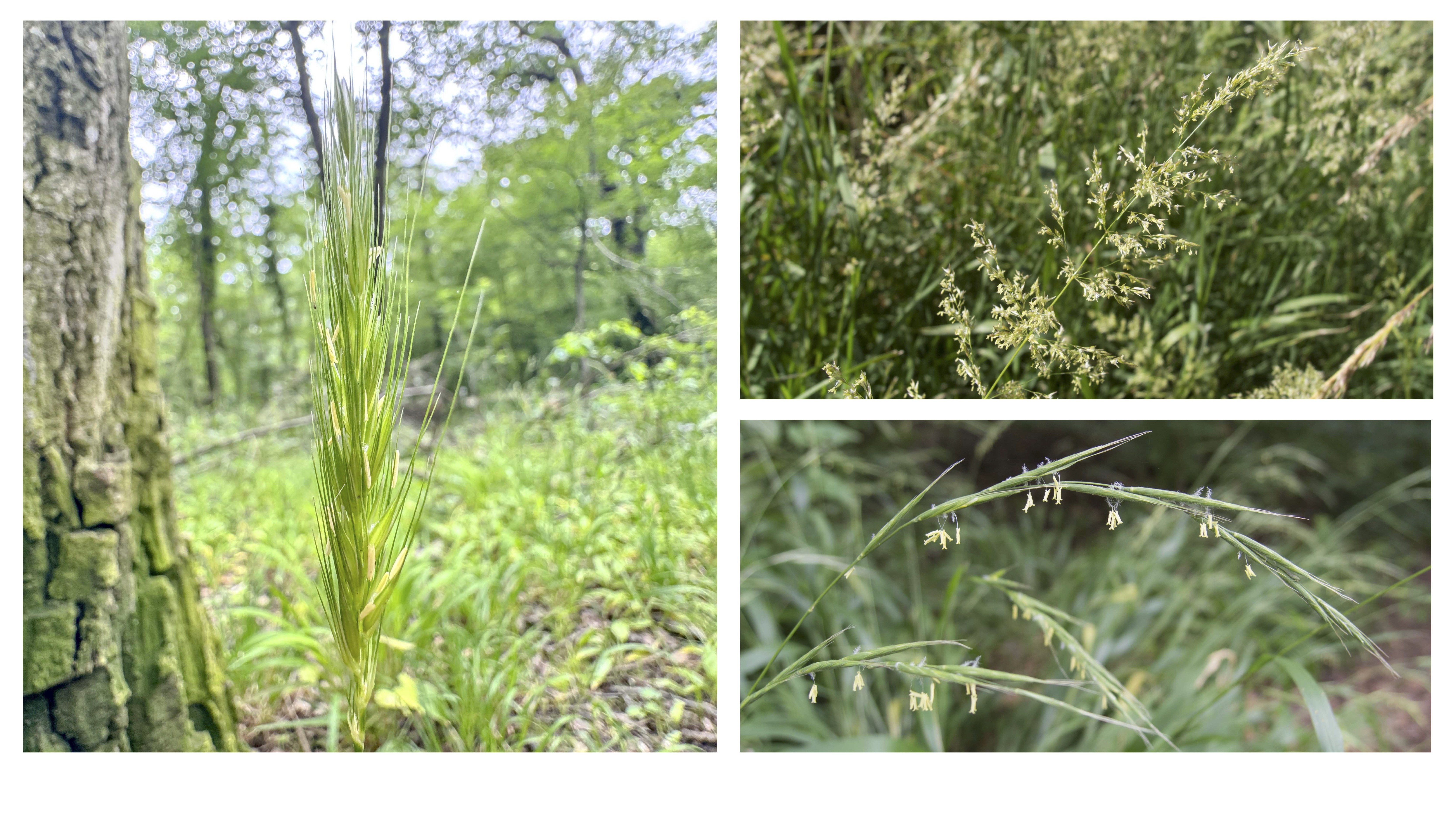We provide here pollen forecasts and recommendations, that are based on our scientifically evaluated data and our expertise. It is our aim to inform persons concerned by pollen allergies in Vienna in a most comprehensive, accurate way and free of charge.
Video Highlight: final phase of the main grass pollination period 2025
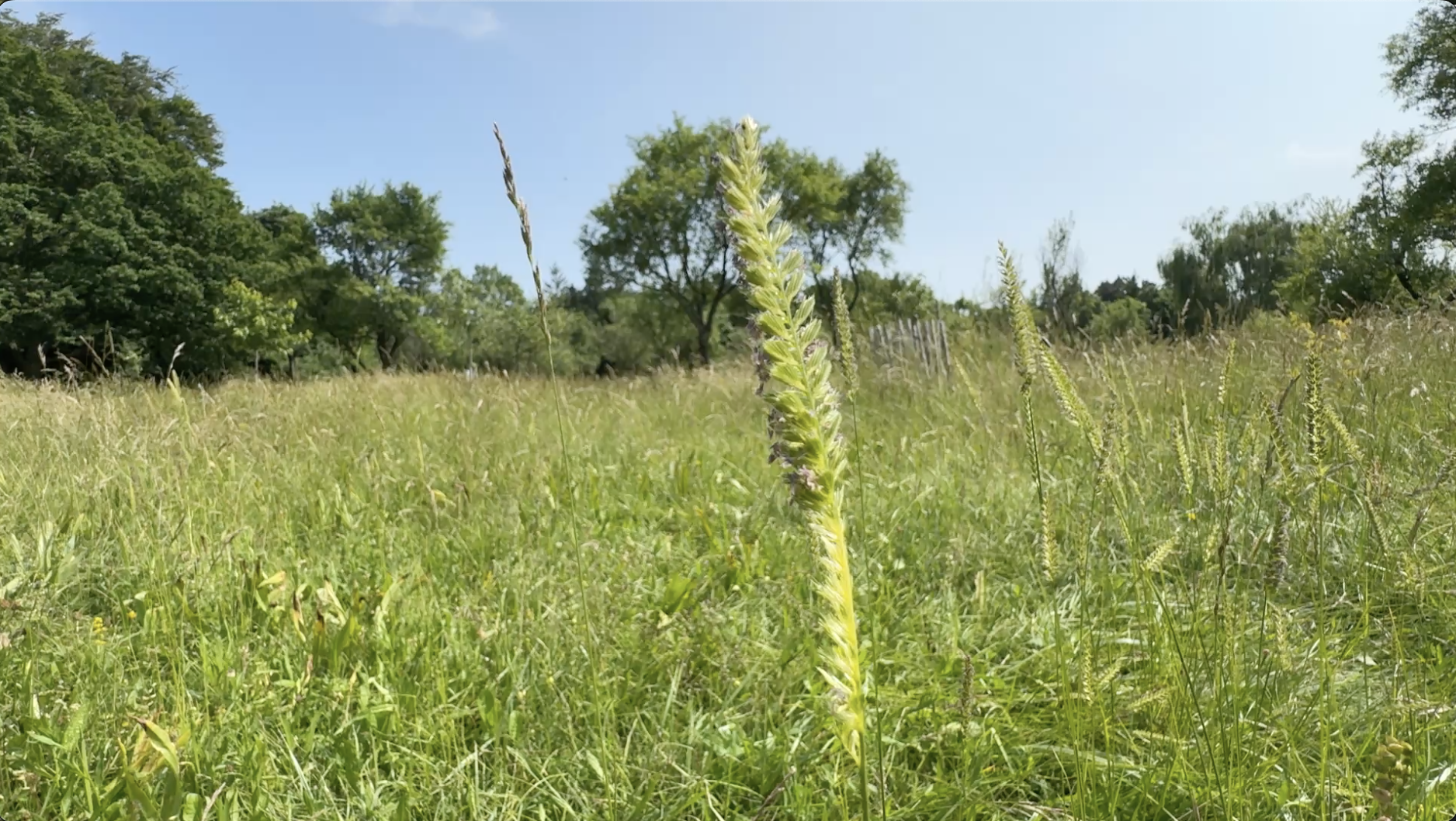
After activation, data will be sent to YouTube. Further information here: Data protection
Here you can see flowering crested dogtail grass (Cynosurus cristatus) in the foreground and extensive meadows in the background, which have already exhausted most of their flowering potential.
Current pollination
LEGEND
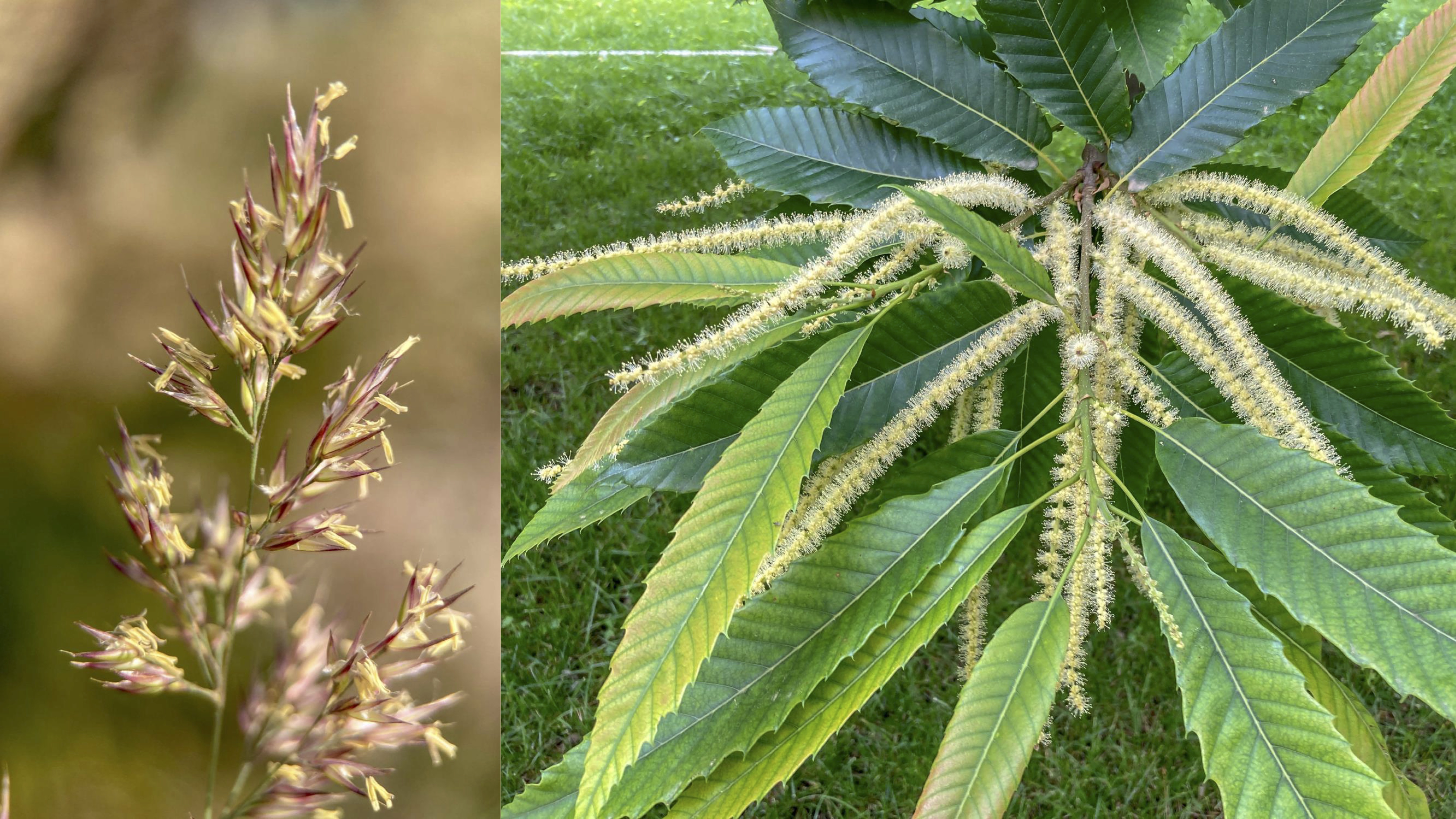
Photo: Flowering reed grass, flowering sweet chestnut
Mid- and long-term forecast for Vienna
This forecast gives you an overview for a longer time period so that you can improve your planning.
Fungal spore concentrations consistently high - grass pollen season not over yet!
The grass pollen season has almost reached the end of its main flowering period. In the city itself, ryegrass, reed grass and bentgrass are still flowering. Ornamental grasses can also cause symptoms. In the surrounding areas of Vienna, crested dogstail, timothy grass and golden oat grass are still releasing pollen. The flowering of grasses is shifting to semi-shaded and shady areas, which should be kept in mind, especially when walking in woodland. Forest grasses are now in flower as well.
In the meadows, dock and plantain are also flowering. Both can trigger cross-reactions in individuals allergic to grass pollen.
The sweet chestnut has reached the end of its main flowering period and is only releasing pollen sporadically. Sweet chestnut pollen is cross-reactive to birch pollen and can therefore cause new symptoms in birch pollen allergy sufferers.
Nettle plants such as stinging nettle and pelitory are now in their main flowering period, and high pollen concentrations are being recorded.
The importance of fungal spores remains high. The concentrations of Cladosporium and Alternaria can rise quite quickly to high levels in the Vienna area due to the weather. Particularly high concentrations are possible after precipitation.
Over the next few days, extreme heat will have Vienna firmly in its grip. Thunderstorms are possible from the middle of the week. Fungal spores are benefiting from the warm and humid conditions and are reaching consistently high concentrations. Grass pollen is still released in moderate, rarely high, concentrations. Pollen from sweet chestnut and nettle plants is also in the air.
Pollination profile
Grasses:
State of the flower: end of the main flowering period/pollination
trend: constant
time of the start of the flower: earlier than average
Fungal spores:
State of the season: main season/high pollination
trend: constant
time of the start of the season: average
Nettle plants:
State of the flower: main flowering period/high pollination
trend: constant
time of the start of the flower: average
You can find the typical pollen seasons in our pollen calendar.
Tip of the season: It is advisable to wear sunglasses and headgear when going for a walk outside. These mechanical barriers ensure that your eyes and hair come into less contact with pollen, thus minimizing direct physical contact with the allergen.
Pollen spectrum:
Pollen from scorpionweed, the amaranth family, Japanese pagoda tree, and linden is also detected at our monitoring station.
Current main allergen: Grasses
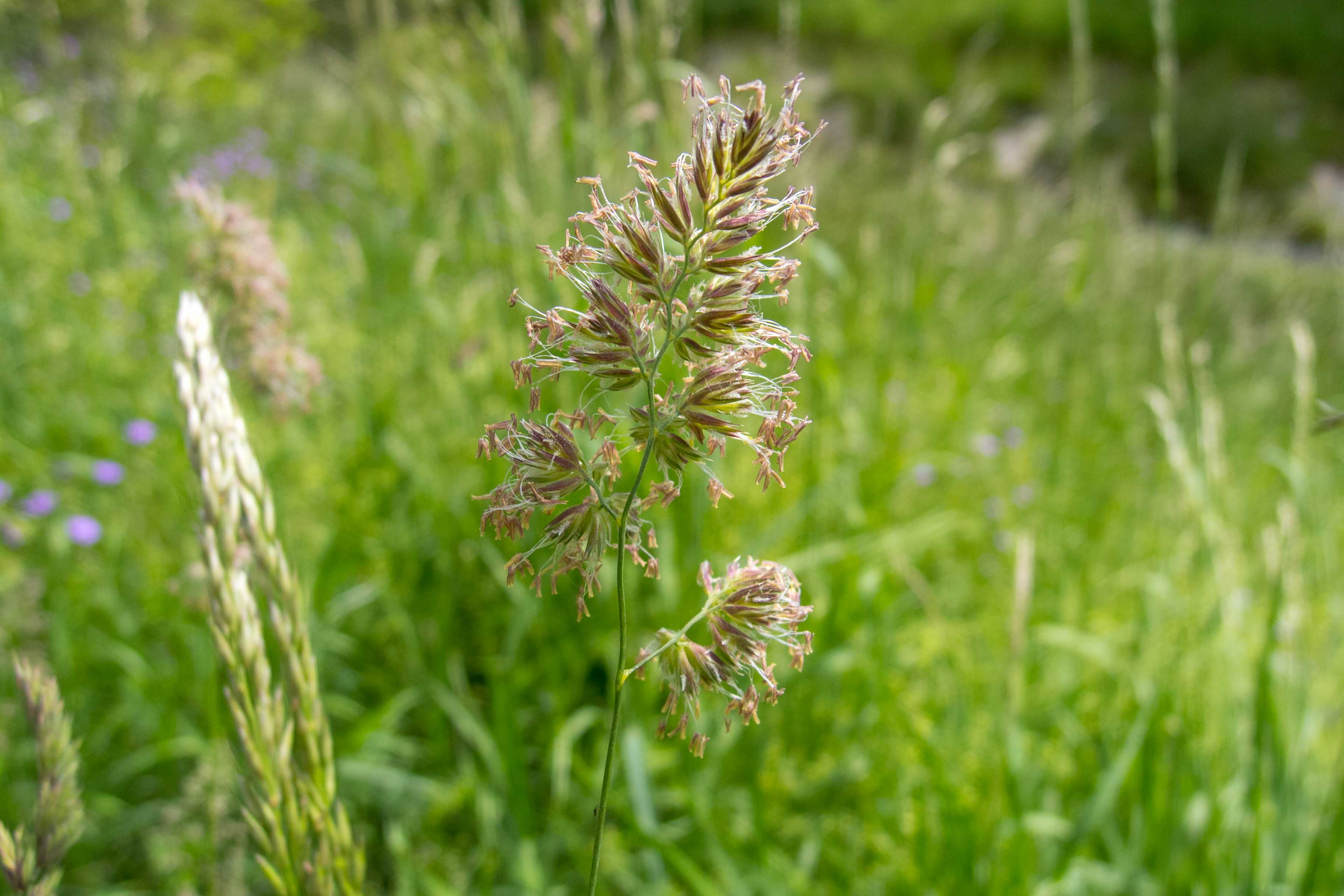
Grass pollen allergy is the most prevalent pollen allergy in Vienna!
Pollination time in Vienna: April to September; decorative grasses extend the pollination time into autumn!
Occurrence in Vienna: The sweet grass family (Poaceae) is prevalent and found nearly everywhere. Natural monuments, parks, the banks of the Danube and obviously all areas (meadows/lawns), that are mowed infrequently, are hot spots.
Who are “the grasses“?
There are many genera and species of relevance for persons concerned, especially because reactions to different taxa of the family are individual. Those grasses, that are of highest relevance for a grass pollen allergy, are mentioned in the following.
Bluegrass (Poa pratensis): flowers from April to June. It is sowed frequently for lawns and pastures.
Orchard grass (Dactylis glomerata): flowers from May to June. It occurs frequently (especially on meadows, roadsides, ruderal areas).
Falseoat-grass (Arrhenatherum elatius): flowers from May to July. Falseoat-grass prefers pastures and clearings.
Fescue grass (Festuca sp.): flowers from May to July. This genus is species-rich and prefers marshes like fine lawns, but also alluvial forests and roadsides.
Perennial rye grass (Lolium perenne): flowers from June to July. Perennial rye grass grows frequently on meadows and pastures and is used as pasture grass.
Timothy grass (Phleum pratense): flowers from June to September. Timothy grass is an allergologically famous gras but plays a minor role in Vienna due to its infrequent distribution. It prefers natural areas.
Bermuda grass (Cynodon dactylon): flowers from July to August. Bermuda grass is a neophyte in Europa and a light and heat indicator.
Cereals (cultivated rye, wheat and maize): Cereals belong as well to the sweet grass family. Grain fields in vicinity of Vienna may cause locally increased pollination, although cereal pollen is in general larger and thus not transported as far. Cultivated rye flowers usually from May to June, wheat from June to July and maize from July to August.
Cross-reactivity to pollen of other plants: Grass pollen is highly cross-reactive among pollen of other grasses
The GeoSphere Austria is our partner for weather forecasts and weather data. We are grateful for the professional interchange and the cooperation.
Video Highlight: first pollination of the birch 2025
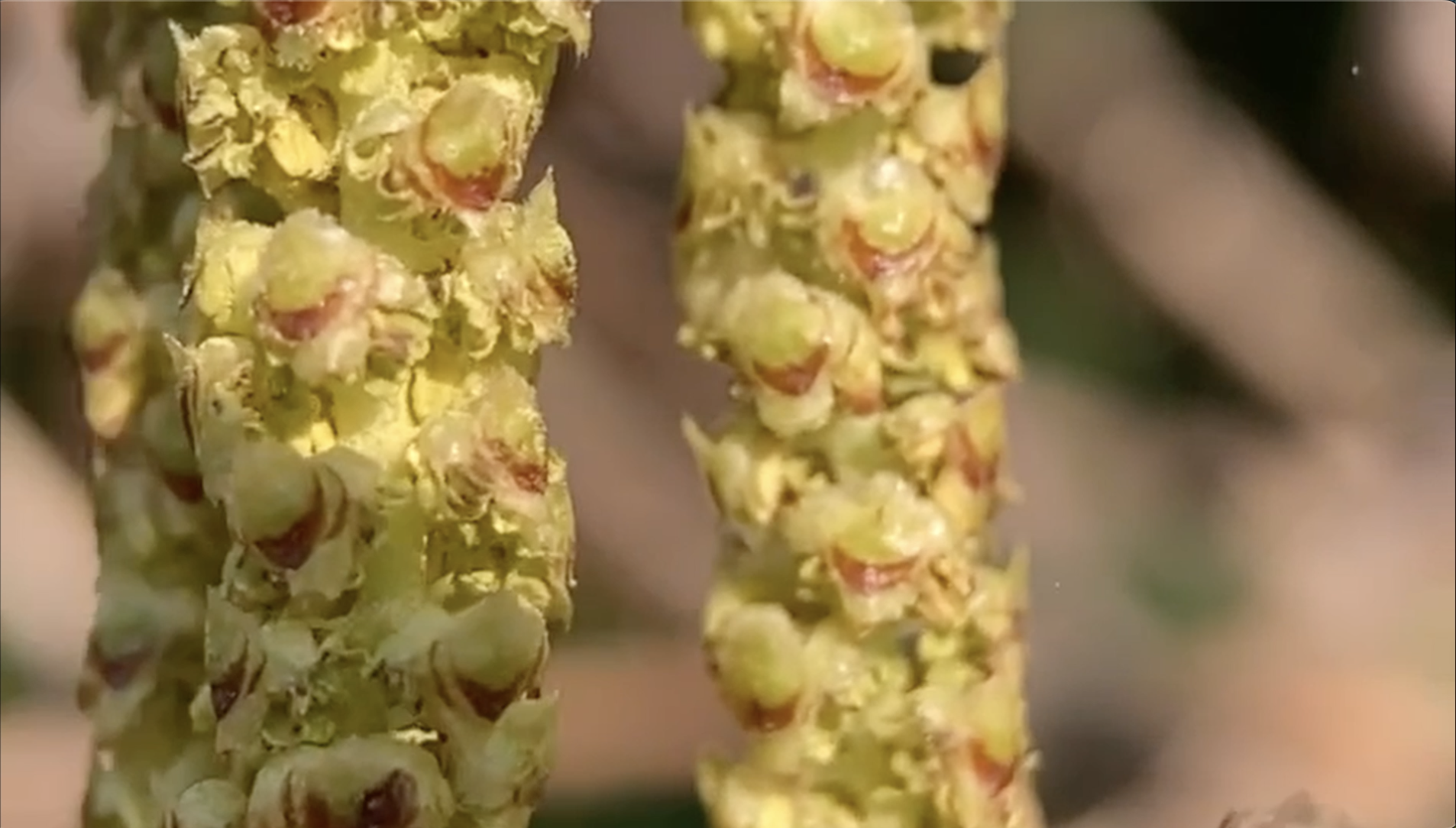
After activation, data will be sent to YouTube. Further information here: Data protection
Here you can see birch catkins that are already dusting in a macro video. Pollen is released into the air as yellowish dust when touched.
